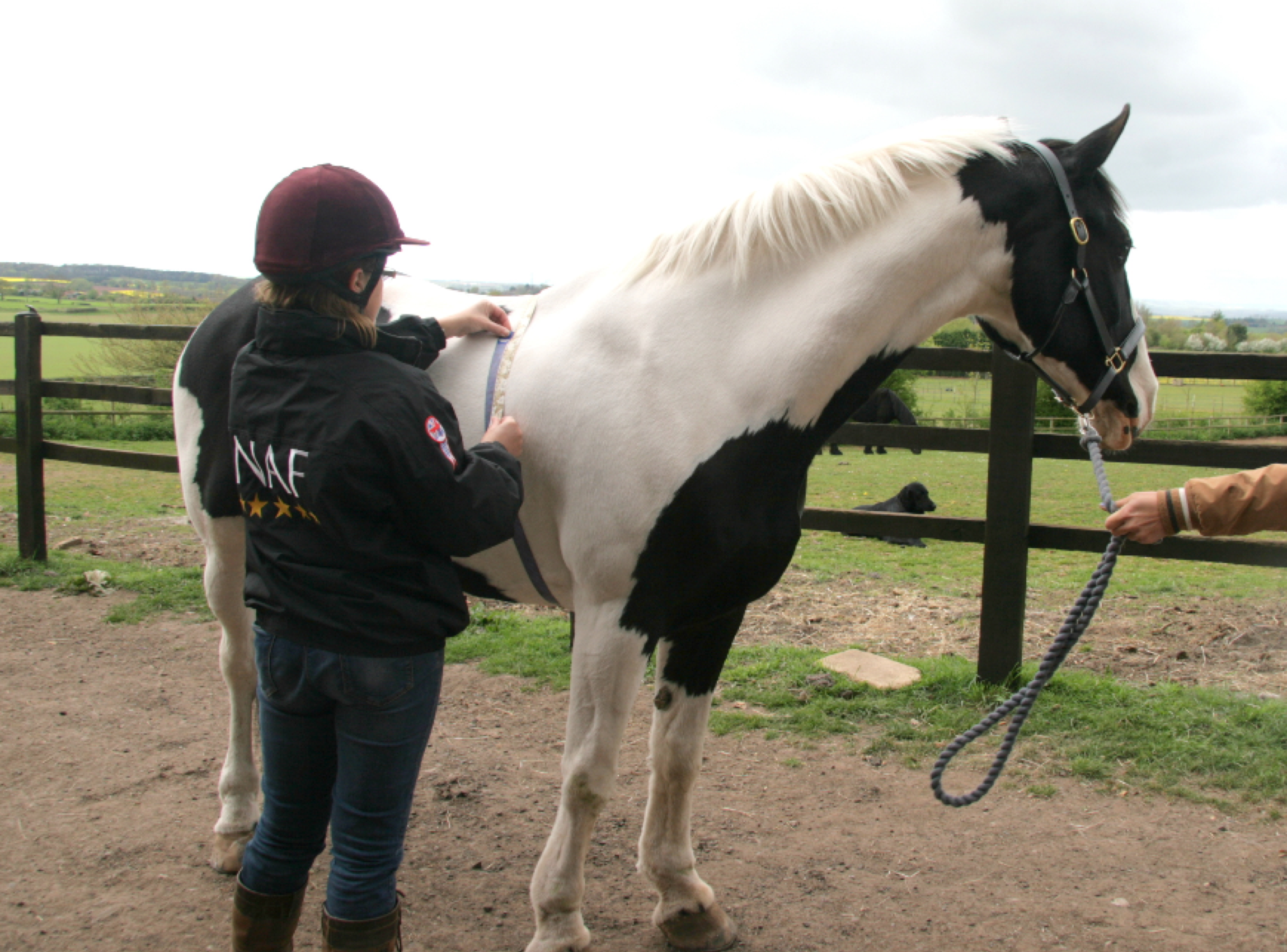
Startling new research, carried out jointly by The Animal Health Trust, Royal Veterinary College and Rossdales Equine Hospital has revealed laminitis is far more prevalent than thought. Although we recognise Spring as
'high risk', it should be considered a year round condition, and in a survey of over one thousand horses and
ponies, it was found that one in ten suffered at least one laminitic episode in the previous year - making
it as common as colic.
So what should you be looking for?
The classic laminitis stance, of rocking back on their heels was only present in less than a quarter of the animals presenting with laminitis. However over 70% showed more subtle signs, particularly difficulty in turning and a short, stilted gait - often described as 'pottery' - so this is something we can all be looking out for. Check too for horses and ponies regularly shifting their weight from foot to foot, which was another common sign. Over half had increased hoof temperature and obvious digital pulses. If you're unsure how to check the hoof, ask your vet
and farrier and they will be happy to show you.
This large scale survey also showed those individuals being shod or trimmed at greater than eight week intervals are at greater risk of laminitis. Therefore whether shod or barefoot, make sure you keep those farrier visits regular, and get the next one booked in before your farrier leaves the yard.
Unsurprisingly the survey found our UK native breeds and cross-breeds to be most at risk, though it can be seen in any animal. Previous episodes of laminitis dramatically increased the risk, as did a sudden increase in weight, so make sure you regularly Body Condition Score your horses, and don’t just rely on eye. To spot any changes over time a weightape can be useful. Although rarely exactly accurate, if used by the same person at the same time weekly they give a good guide to any change.

Fig 1: A weigh tape is an easy way to spot any weight changes.
If changes towards weight gain are seen, then appropriate measures should be taken with the diet. For the majority of leisure horses and ponies a fibre and forage diet alone is more than adequate for energy and protein requirements. However remember natural soil deficiencies in the UK will be passed to the grazing, so it’s advised to feed a broad spectrum vitamin and mineral to ensure they’re getting all the require for hoof health and general vitality.
Management is certainly key, but even with good management some individuals will always be more prone. Research is now getting a better understanding in to risks like Equine Metabolic Syndrome (EMS).
EMS is a similar reaction to Type II Diabetes, and means the animals are insulin resistant (I.R). In the wild, insulin resistance allows ponies to thrive on a very harsh diet, and explains why our Natives can thrive naturally in conditions such as Shetland, the Fells and Dartmoor to name but a few. Unfortunately this ability to thrive on low nutrient grazing becomes a problem when faced with rich agricultural pasture. On modern grassland I.R. results in excess circulating glucose which is then laid down as 'fat pads', typically on the crest of the neck, the shoulder and tailhead. The diet should be managed to provide bulk as high fibre with little, or no, additional of cereals. A suitable high fibre diet helps keep non-structural carbohydrates (NSCs, sugars and starch) to a safe, manageable level in the diet. A high fibre diet can come from naturally grazing, but watch out for spring and autumn flushes of grass, which are high in the NSCs, and so it may be necessary to manage turnout accordingly.
Pasture management may include turning out with a grazing muzzle, using strip grazing, or turning out overnight, when pasture sugars are relatively low, and bringing them in during the day as levels rise. Try not to just fence off a small area for laminitics as this reduces their opportunity to keep moving and naturally active. If possible, why not look into the 'Track System', grazing around the edge of a field, and keeping them moving. Positioning essentials like the water, salt lick and shelter all at different places around the track, makes sure they keep moving.
Whatever your turnout management, remember the importance of regular exercise, which not only helps to control weight gain, but also ensures healthy blood flow around the laminae.
For the IR / EMS equine in hard work, low nutrient fibre alone may not provide sufficient energy. We can advise oil as a safe, suitable form of slow release energy for laminitics. Remember to introduce oil gradually to the diet over several weeks, to give the metabolism time to adjust to the new energy source, and to balance the provision of oil with additional Vitamin E.
In conclusion the right diet working in synergy with correct management will help keep the laminitis prone fit and healthy all the way through Summer and Autumn
NAF © 2024 | NAF is a trading name of Greencoat Limited, registered in England & Wales. Greencoat Ltd - Registered address: Weston Centre, 10 Grosvenor Street, London, W1K 4QY. Registered Number: 1560 108. Registered in England & Wales.Number: 1560108 VAT Registration Number: 378 9295 80